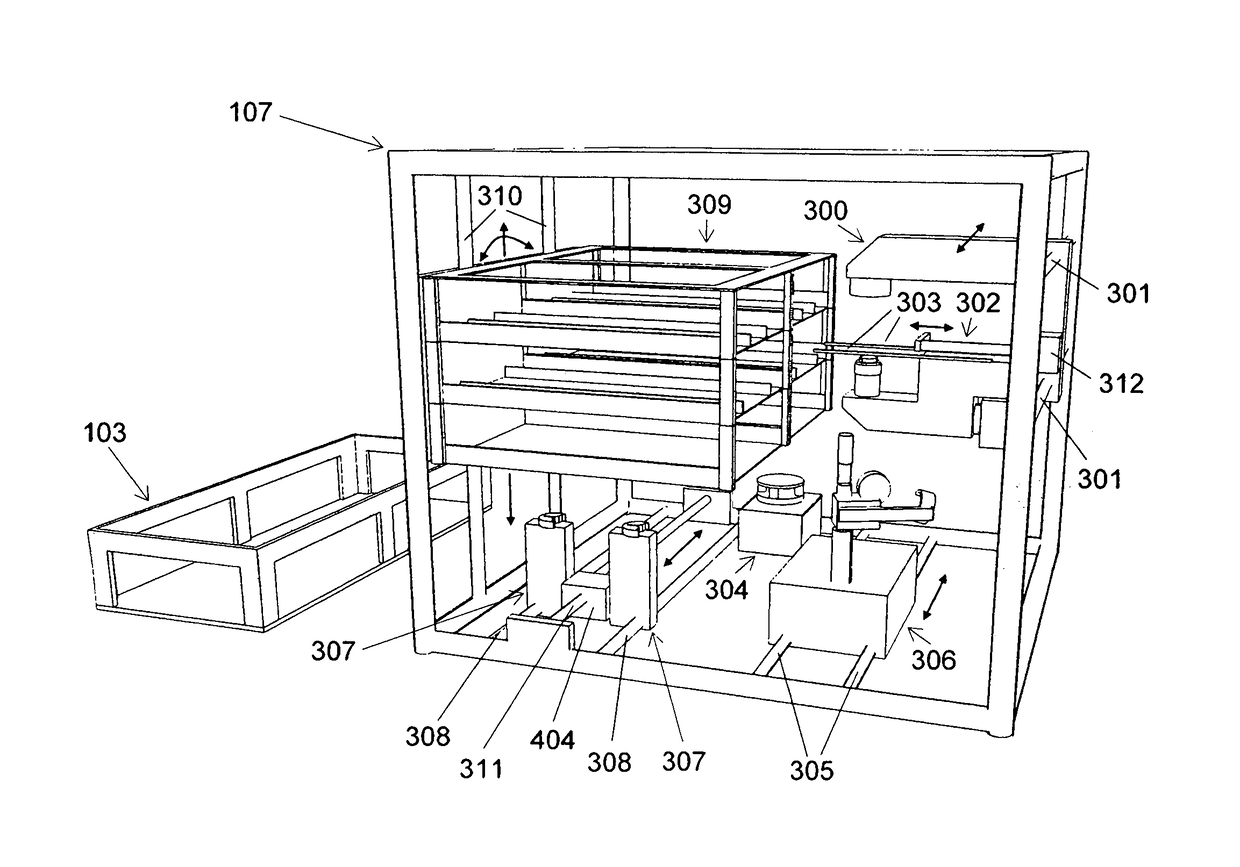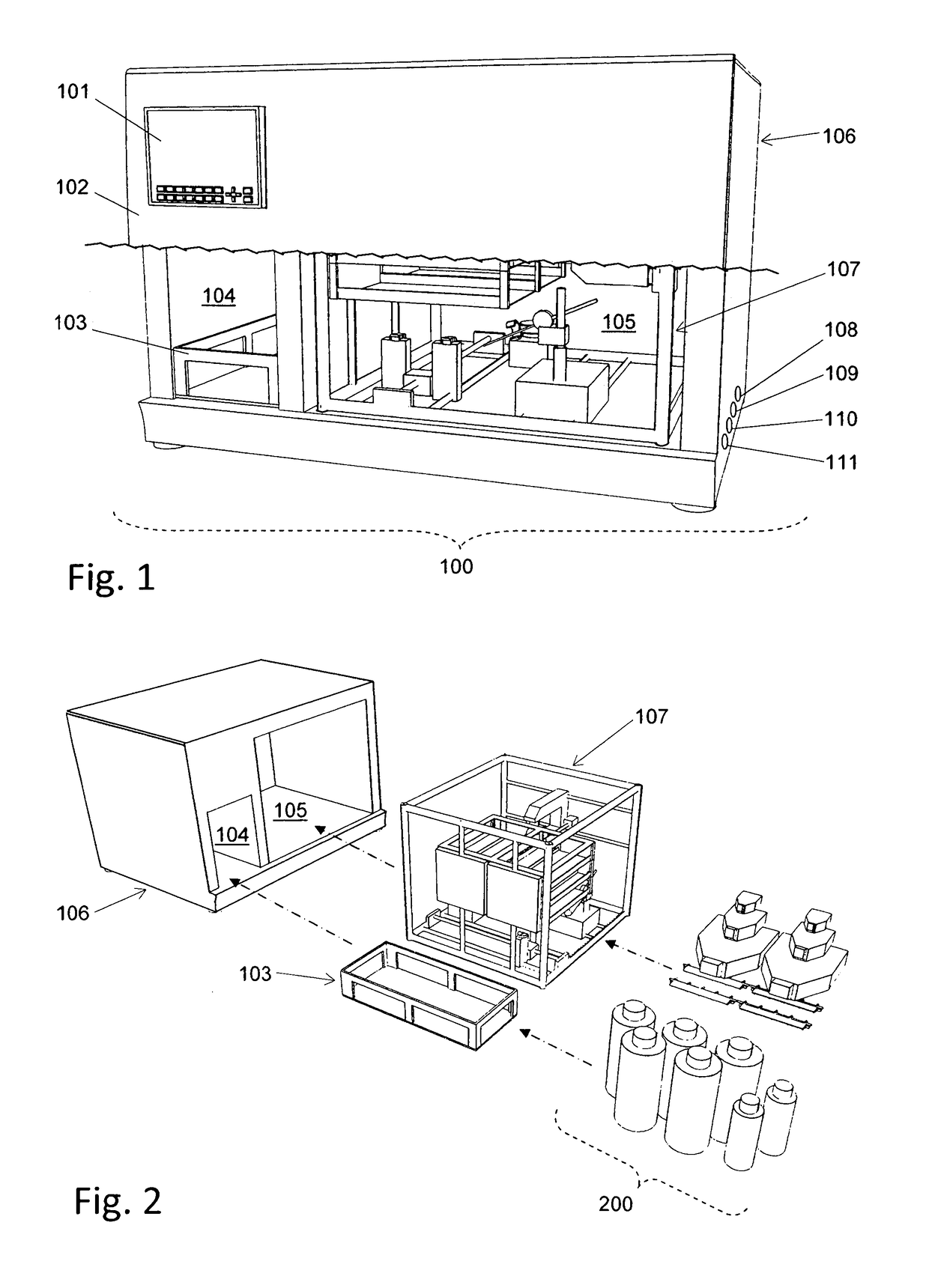Automated cell culture system
a cell culture system and automatic technology, applied in the field of biotechnology, can solve the problems of high cost of good manufacturing practice compliant manufacturing, high cost of cell culture process complexity, and most limited success
- Summary
- Abstract
- Description
- Claims
- Application Information
AI Technical Summary
Benefits of technology
Problems solved by technology
Method used
Image
Examples
example process
Description of Example Process
[0094]The following section describes an example of an application of the automated cell culture arrangement performing a cell culture process in an automated manner. The chosen example process includes the isolation of cells from a tissue biopsy, proliferation of these cells, harvest of the proliferated cells, purification and concentration of the harvested cells. This example process shows how the different elements of this invention may be used in a process and how they may interact. However, the automated cell culture arrangement is not at all limited to the described example process but is applicable to a large range of other processes.
[0095]Transportation of fluid from one vessel to another vessel in the closed cell culture module 200 requires correct setting of corresponding valves 1005. Setting of the valves by the valve actuator 307 is assumed to be known from standard techniques in the art and not described below.
Process Activities Requiring M...
PUM
| Property | Measurement | Unit |
|---|---|---|
| angle | aaaaa | aaaaa |
| temperature | aaaaa | aaaaa |
| temperature | aaaaa | aaaaa |
Abstract
Description
Claims
Application Information
 Login to View More
Login to View More - R&D
- Intellectual Property
- Life Sciences
- Materials
- Tech Scout
- Unparalleled Data Quality
- Higher Quality Content
- 60% Fewer Hallucinations
Browse by: Latest US Patents, China's latest patents, Technical Efficacy Thesaurus, Application Domain, Technology Topic, Popular Technical Reports.
© 2025 PatSnap. All rights reserved.Legal|Privacy policy|Modern Slavery Act Transparency Statement|Sitemap|About US| Contact US: help@patsnap.com



